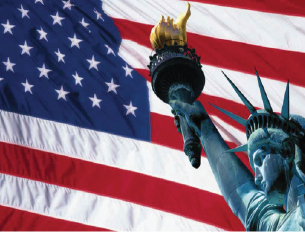|

Content contributed by Larry Cekola, Imperial Beverage
 American Vinticulture Area (AVA) is a recognized wine growing region designated by the US government. The Alcohol & Tobacco Tap and Trade Bureau regulates the industry and must approve the area upon petition from the winery. In 2010, there were 198 AVAs in the US. In order for a winery to place an AVA on their label, a minimum of 85% of the grapes used to produce the wine must be grown in that AVA. With county-specific designated AVAs, the law allows for the use of a minimum of 75%. Most state’s in the US only require 75% of the grapes to be grown in that state to allow for the states appellation. California however requires 100% of the grapes to be grown there in order to use it as an appellation designation. American Vinticulture Area (AVA) is a recognized wine growing region designated by the US government. The Alcohol & Tobacco Tap and Trade Bureau regulates the industry and must approve the area upon petition from the winery. In 2010, there were 198 AVAs in the US. In order for a winery to place an AVA on their label, a minimum of 85% of the grapes used to produce the wine must be grown in that AVA. With county-specific designated AVAs, the law allows for the use of a minimum of 75%. Most state’s in the US only require 75% of the grapes to be grown in that state to allow for the states appellation. California however requires 100% of the grapes to be grown there in order to use it as an appellation designation.
The TTB regulations of the wine industry are minimal, unlike the harsh old-world regulations based on region, variety, elevation and limited irrigation. The TTB has for the most part left the doors open for wineries to produce what they want and where they want it, limiting it only with AVA designations.
The TTB allows for the use of, as they put it, “semi-generic” wine terms on the label. The words Burgundy, Chianti or Champagne may appear on the label of a California wine, when they obviously were not grown in those famous regions of the world. The European wine industry has been lobbying through the World Trade Organization to eliminate the use of these terms, to no avail.
Other than the AVA designations, the TTB has only set forth a few limitations on US wine producers. Ninety five percent of the wine must be grown in a particular year in order to use a vintage specification. On varietal designation, 75% of the wine must be from that grape in order to use the specific varietal on the label. TTB law also requires the Surgeon General’s warning on alcohol consumption and the disclosure that it contains sulfites, if applicable.

 |
 |
END OF BEGINNER WINE
Click Center Icon to Return to Pg. 1 |
|
